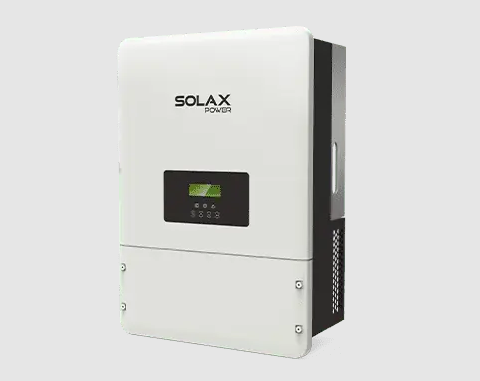
Introduction
A 10KW three-phase inverter plays a crucial role in power conversion for industrial, commercial, and large-scale residential applications. It ensures efficient energy management, improved power stability, and optimized load distribution. In this article, we will explore the workings, benefits, and applications of a 10KW three-phase inverter while providing insights into its selection and maintenance.
What is a 10KW Three-Phase Inverter?
A 10KW three-phase inverter is an electrical device that converts direct current (DC) into three-phase alternating current (AC) with a power output of 10 kilowatts. This type of inverter is commonly used in renewable energy systems, including solar and wind power installations, to provide a stable power supply for industrial and commercial operations.
How Does a 10KW Three-Phase Inverter Work?
The inverter receives DC power from sources like solar panels, batteries, or wind turbines and converts it into AC power suitable for powering three-phase loads. The conversion process involves several stages:
-
DC Input: The inverter receives DC power from a renewable energy source or battery storage system.
-
Inversion Process: The internal circuitry, including insulated gate bipolar transistors (IGBTs) or MOSFETs, modulates the DC power into a high-frequency AC waveform.
-
Filtering & Regulation: The AC output is processed through filters to ensure smooth and stable three-phase power delivery.
-
Output Distribution: The final AC output is fed into the electrical grid or used directly by industrial machinery and commercial appliances.
Benefits of Using a 10KW Three-Phase Inverter
1. Efficient Power Distribution
Three-phase inverters ensure balanced power distribution, reducing energy losses and enhancing system performance.
2. Support for High-Power Applications
With a 10KW capacity, these inverters can handle large electrical loads, making them ideal for industrial equipment and commercial buildings.
3. Grid-Tie and Off-Grid Compatibility
Many three-phase inverters are compatible with both grid-tied and off-grid systems, ensuring flexibility in energy management.
4. Improved Power Quality
Modern three-phase inverters provide high power quality with minimal harmonics, ensuring stable voltage and frequency regulation.
5. Enhanced Reliability and Longevity
Equipped with advanced protection features such as overvoltage, overcurrent, and short-circuit protection, these inverters offer extended operational life.
Key Applications of 10KW Three-Phase Inverters
1. Industrial and Manufacturing Facilities
Industries require stable and high-power electricity to operate machinery, conveyor belts, and automated systems. A 10KW three-phase inverter ensures smooth operations.
2. Commercial Buildings
Large office complexes, shopping malls, and hospitals benefit from these inverters by ensuring an uninterrupted power supply for essential operations.
3. Renewable Energy Systems
Solar and wind power installations use three-phase inverters to integrate generated power into the electrical grid efficiently.
4. Agricultural Applications
Farms rely on these inverters to power irrigation systems, grain mills, and other agricultural machinery.
5. EV Charging Stations
Electric vehicle charging stations use three-phase inverters to deliver efficient power conversion and stable voltage levels.
How to Choose the Right 10KW Three-Phase Inverter
1. Efficiency Ratings
Look for an inverter with a high efficiency rating (above 95%) to minimize energy loss.
2. Grid Compatibility
Ensure the inverter supports grid-tied, off-grid, or hybrid configurations based on your needs.
3. Waveform Type
Pure sine wave inverters are recommended for high-power applications to maintain power quality.
4. Protection Features
Choose an inverter with built-in safety features such as surge protection, overvoltage protection, and thermal management.
5. Brand and Warranty
Opt for reputable brands offering extended warranties and reliable customer support.
Installation and Maintenance Tips
Installation Guidelines:
-
Ensure proper ventilation to prevent overheating.
-
Use the correct wiring and circuit breakers for safety.
-
Follow manufacturer instructions for seamless integration into the electrical system.
Maintenance Practices:
-
Regularly check and clean cooling fans and ventilation areas.
-
Monitor output voltage and current to detect irregularities.
-
Inspect wiring and connectors for wear and tear.
-
Update firmware and software for optimal performance.
Conclusion
A 10KW three-phase inverter is a critical component in industrial, commercial, and renewable energy applications. By choosing the right inverter, ensuring proper installation, and conducting regular maintenance, users can maximize energy efficiency and operational reliability. Whether for solar energy systems, industrial operations, or EV charging stations, these inverters provide a stable and efficient power solution for various needs.





Leave a Reply